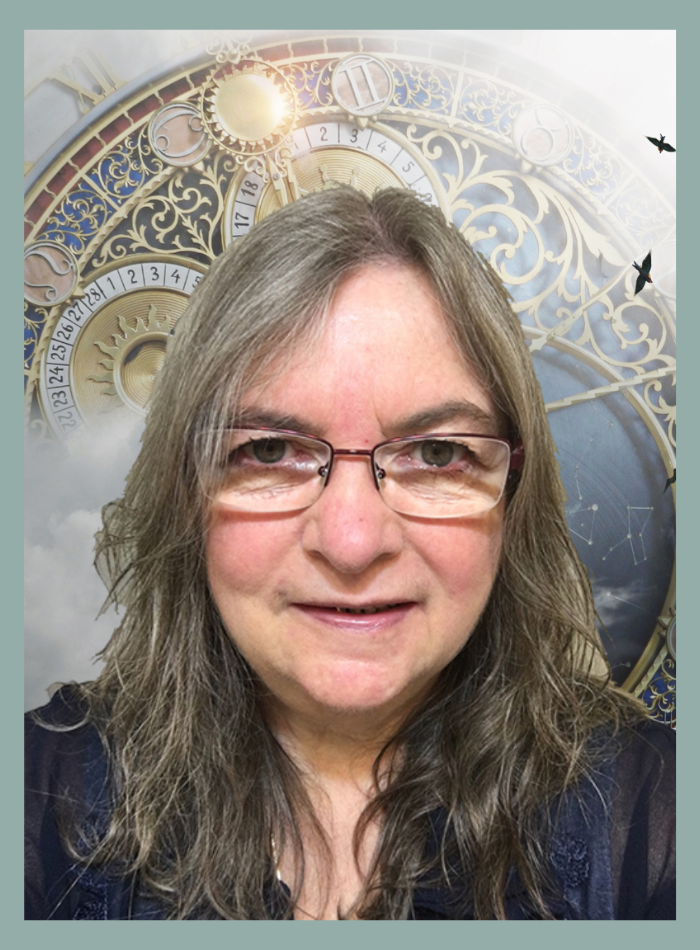 If you read my last two blog posts (available here and here) you should have some understanding of what Identity Shifting is, and whether or not you are interested in consciously shifting your identity to something/someone you are dreaming to become.
If you read my last two blog posts (available here and here) you should have some understanding of what Identity Shifting is, and whether or not you are interested in consciously shifting your identity to something/someone you are dreaming to become.
I have been reading Dr. Joe Dispenza’s books: Evolve Your Brain; Breaking the Habit of Being Yourself; Placebo; and Becoming Supernatural. I am in awe of the types of changes and shifts that the people in these books have made – everything from dropping old but firmly established habits and limiting beliefs, to ‘curing’ themselves of serious illness like cancer, and, yes, Lupus.
In order to help you get started with your own personal identity shift I have identified and described six identity shifting techniques that are easy and fun to use. And a couple of tips that Joe Dispenza talked about that were common characteristics shared by his most successful clients.
The six identity shifting techniques that I really enjoy using, are:
1) Your Ideal Day: This is one of the best techniques around. With this technique you basically  describe what your ideal day would look like, feel like, sound like, smell like, taste like, be like. What would you be doing, thinking, saying, feeling, eating, wearing, and believing as you go through a normal day in your new life. This can either be done on an hour by hour basis, like writing out a daily calendar. Or you could write out a essay on a day in your new life, as if you were telling a close friend about your new life. Use lots of descriptive words and make you ideal day as real, and as emotionally and sense-laden as you possibly can.
describe what your ideal day would look like, feel like, sound like, smell like, taste like, be like. What would you be doing, thinking, saying, feeling, eating, wearing, and believing as you go through a normal day in your new life. This can either be done on an hour by hour basis, like writing out a daily calendar. Or you could write out a essay on a day in your new life, as if you were telling a close friend about your new life. Use lots of descriptive words and make you ideal day as real, and as emotionally and sense-laden as you possibly can.
2) Scripting: Scripting is like day-to-day journaling, except that you are journaling detail of the identity you are creating, and not the life you are currently living. In this journal, you are basically answering “What if..” questions about your new identity. So questions like “What would my life be  like if abundance and prosperity flowed into my life constantly?”, “What would my life be like if I had my ideal job/career, one that challenged, energized, and excited me, and allowed me to take the time I need to deal with Lupus?”, “What would my life be like if I had all the personal support I needed, when I needed it.” With scripting, writing out what your life would be like if you were living your ideal life, helps you focus your mind on the positives and on the ideals that you are looking for. This helps you perceive opportunities and synchronicities that will help you begin building your ideal new identity now.
like if abundance and prosperity flowed into my life constantly?”, “What would my life be like if I had my ideal job/career, one that challenged, energized, and excited me, and allowed me to take the time I need to deal with Lupus?”, “What would my life be like if I had all the personal support I needed, when I needed it.” With scripting, writing out what your life would be like if you were living your ideal life, helps you focus your mind on the positives and on the ideals that you are looking for. This helps you perceive opportunities and synchronicities that will help you begin building your ideal new identity now.
3) Act As If: When you, act as if, you start to act, think, feel the way someone with your new  identity does, and you begin to act and do things that someone with your new identity would. For example, if your new identity is someone who is environmentally friendly, then you can begin reusing, recycling, and refusing, you can begin to pick up any trash that you find when you go for walks through nature or on a beach, etc. Doing these small things will help you begin to feel, think, and act in ways that are consistent with your new identity. If your new identity is being a powerful and successful entrepreneur, then acting like one (the way you dress, your daily schedule, seeing anyone you meet as possible clients, etc.) will help you start becoming your new identity before you actually become a powerful and successful businessperson.
identity does, and you begin to act and do things that someone with your new identity would. For example, if your new identity is someone who is environmentally friendly, then you can begin reusing, recycling, and refusing, you can begin to pick up any trash that you find when you go for walks through nature or on a beach, etc. Doing these small things will help you begin to feel, think, and act in ways that are consistent with your new identity. If your new identity is being a powerful and successful entrepreneur, then acting like one (the way you dress, your daily schedule, seeing anyone you meet as possible clients, etc.) will help you start becoming your new identity before you actually become a powerful and successful businessperson.
4) Immersion: Another interesting technique that will help you shift into your new identity is to  surround yourself with artifacts that are consistent with things your new identity would treasure. If your new identity is an artist, surround yourself with art books, art supplies, etc., If your new identity is a writer, surround yourself with things you would find in a writer’s home – books, dictionaries, notebooks, pens, a computer, etc. The idea here is to have things in your environment that constantly remind you of who you are becoming, and remove any items from your environment that continue to remind you of who you used to be.
surround yourself with artifacts that are consistent with things your new identity would treasure. If your new identity is an artist, surround yourself with art books, art supplies, etc., If your new identity is a writer, surround yourself with things you would find in a writer’s home – books, dictionaries, notebooks, pens, a computer, etc. The idea here is to have things in your environment that constantly remind you of who you are becoming, and remove any items from your environment that continue to remind you of who you used to be.
5) Affirmations: These are statements that we say to ourselves and about ourselves. These statements can be either positive or negative, and, unfortunately, for many of us the negative affirmations seem to be the easiest ones to make. I hate my life. Lupus is making my life miserable. My fatigue levels are overwhelming. My life is overwhelming. No one provides my with any support. I can’t continue to do this. Do any of these statements sound familiar? Fortunately, these statements can also be positive statements that help us reinforce the wonderful things that are both currently in our lives and soon to arrive. The most powerful of the positive affirmations are “I am…” statements. So, thinking about who you are becoming, powerful I am…. statements could be “I am a highly successful online entrepreneur that gets to set my own schedule.” Or “I am a brilliant artist/writer/photographer/designer who loves being highly creative.” “I am walking my way to a very healthy lifestyle.” “I am receiving all of the support I need, both at home and at the office.” These statements also help shift our mindset and identity away from speaking and thinking about our lives as being hard and difficult, to a mindset and identity that refers to a more positive mindset and identity.
6) Afformations: Afformations are questions that we ask ourselves that help us identify characteristics, actions, thoughts, beliefs consistent with the person we are becoming. These questions also get our minds busy trying to answer these questions, working for us as we focus on shifting our identity to the whole new you. Afformations can be use anytime of the day, regardless of what you are doing, for example, as you are preparing a meal you could ask yourself “What would a person focused on improving their health add to this meal to make it healthier?”. If you are grocery shopping you could be asking yourself “Is this something that a person managing their Lupus would buy and eat?”. If you are watching TV or a movie, or reading a book, you could ask yourself “Is this something a highly creative person would read or watch?” The key with afformations is to begin thinking and behaving in ways that are consistent with the new identity that you are shifting to. Asking these questions, even when they are just to yourself, can point out characteristics, activities, beliefs that you want to develop, but hadn’t really thought of before, or if you had, might not of associated these characteristics, etc., with the identity you are shifting to..
While each of these six identity shifting techniques are very powerful on their own, when you combine them, using two or three of these techniques together, the shifts usually come easier and faster.
If you are working consistently with these techniques, but are finding that the shift is not happening, or is not happening fast enough, the there is a characteristic that Joe Dispenza identified in his books as being consistent in all of his clients who were highly successful with this type of transformation.
Everyone who successfully transformed their life, including those who healed themselves from serious and chronic illnesses were all fully convinced that they were going to be successful with what they were doing. There was never a question of if they would be successful, there was never any doubt, they fully believed they could do it. And with this belief, they constantly and consistently used the techniques they were given – 24 hours a day, seven days a week, 53 weeks a year, without any hesitation. These techniques, this shift in identity became a full-time pursuit for these people, not just a part-time effort made when they remembered to make the effort.
Several of the above techniques can easily be practiced on a full-time consistent basis. Affirmations and Afformations can be running through our minds constantly. We can surround ourselves with artifacts, posters, decor that constantly reminds us of the identity that we are becoming. We can begin our day scripting what our ideal day is like once we have shifted into our new identity.
As a way to cut down on the stress and possible overwhelm that can overtake us when we try to commit to something long-term, try committing to do one or two of these techniques for one day. When you have successfully completed one day of identity shifting, try committing to a second day. One day at a time eventually leads to a week, then to a month, then to a complete identity shift.
As always, if you are looking for support, encouragement, clarification, email me at info@annebolender.com or book a free 30 minute Lupus Life Coaching Strategy Session.
.




